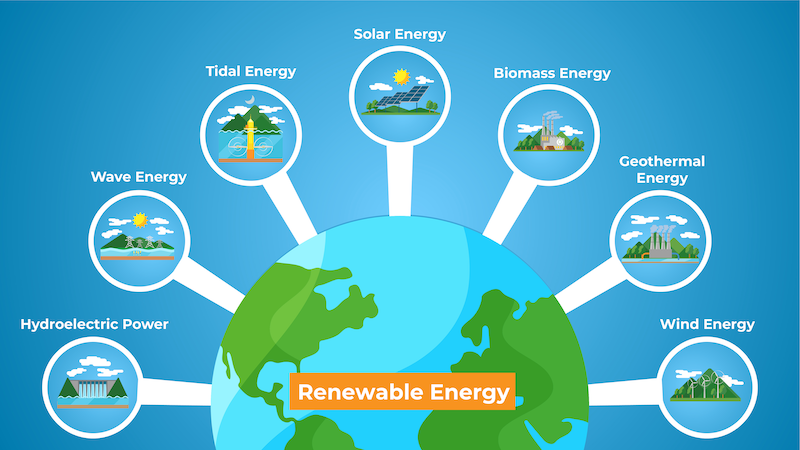It begins in silence—the soft hum of an induction stove, the quiet click of an electric bike charging in the corner, the gentle pulse of a smart meter tracking the day’s sunlight. Green energy doesn’t always announce itself with giant wind turbines or fields of solar panels. More often, it slips quietly into kitchens, offices, and streets, transforming the familiar without fanfare. This is the story of how a global energy revolution has become deeply personal.
1. Morning: Sunlight and Simplicity
At dawn in Barcelona, Clara’s apartment wakes before she does. The blinds lift themselves halfway to let the light in. A dashboard on her tablet reports that her rooftop panels have already started generating power. Her coffee machine brews its first cup with clean electricity. She doesn’t think of herself as part of a revolution—she just likes the idea that her energy bills are smaller, her conscience lighter.
The change feels almost invisible, yet it represents a profound shift in human history. For centuries, daily life depended on energy sources that polluted, depleted, and divided societies. Now, the light that wakes Clara’s apartment powers her entire morning. What once required the burning of coal now flows effortlessly from the sky.
In this quiet domestic rhythm lies one of the most radical transformations of our age: the merging of sustainability with comfort. Green energy no longer demands sacrifice—it enhances convenience, autonomy, and design.
2. Midday: The City Breathes Differently
Outside, the city hums with a new rhythm. The old diesel buses are gone, replaced by sleek electric vehicles gliding through traffic. Solar-powered benches charge commuters’ phones; green roofs cool the buildings; wind turbines turn lazily on the outskirts of town. What was once pollution and noise has become efficiency and calm.
This transformation didn’t happen overnight. It took decades of innovation, public policy, and cultural change. The early 21st century was marked by skepticism—renewables were seen as expensive, unreliable, and niche. But breakthroughs in battery storage, smart grids, and decentralized power generation turned the tide. Cities began to recognize that sustainability was not a luxury—it was the foundation for livable futures.
Now, urban planning integrates energy flow the way it once designed water or traffic systems. Data-driven energy management, automated balancing between supply and demand, and AI-optimized microgrids make cities breathe differently. Every building, every streetlight, every vehicle participates in a dynamic, renewable ecosystem. The city itself becomes alive—responsive, balanced, and intelligent.
3. Afternoon: The Work of Energy
In a small workshop in Vietnam, Minh repairs solar lanterns used by nearby farmers. His business is part of a local cooperative supported by an international green-energy fund. The tools he uses, the light above his head, even the battery in his phone—all powered by renewable energy.
For Minh, green energy isn’t an abstract global agenda. It’s employment, dignity, and opportunity. The cooperative trains young technicians, offering jobs that blend craftsmanship with technology. A generation earlier, their parents might have worked in coal yards or on fishing boats struggling with unstable fuel prices. Now, they work with light.
Around the world, this pattern repeats. Green energy creates local ecosystems—manufacturers, installers, repairers, educators. It redistributes wealth by decentralizing production. Instead of a few massive companies controlling fossil fuel pipelines, thousands of small enterprises maintain and innovate across renewable networks. The energy transition is not just technological; it is deeply social.
4. Evening: Rural Lights, Urban Dreams
In a remote village in Tanzania, a school glows faintly against the darkening sky. The power comes from a shared solar hub, installed by a community initiative. For the first time, children can study after sunset. Mothers can charge phones to communicate with relatives working in cities. Farmers can refrigerate milk for longer, reducing waste.
Every flicker of light here is a small act of defiance against energy poverty. Billions once lived without reliable electricity—a condition that limited education, healthcare, and safety. Now, decentralized solar systems are rewriting that story. Each battery, each panel, each meter becomes a chapter in the democratization of energy.
Meanwhile, in London, a startup designs modular wind turbines for apartment balconies. In California, a neighborhood co-op builds a shared battery bank. In India, railways are being electrified through solar corridors. Across the globe, urban ambition and rural aspiration are connected by the same current—one powered not by oil, but by imagination.
5. Night: Reflections in the Dark
By the time night falls, the world glows with quiet resilience. In Clara’s apartment, the day’s leftover solar energy charges her home battery. The city lights shimmer without guilt. Somewhere, a wind farm turns steadily, unseen but indispensable.
For decades, the story of progress was tied to consumption: more cars, more power plants, more extraction. The green revolution rewrites that narrative—it’s no longer about how much we consume, but how wisely we generate. Progress is measured in efficiency, equity, and harmony.
The psychological change is perhaps the most powerful of all. People no longer see environmentalism as a constraint but as creativity—a design challenge, a collective project. The climate crisis, once paralyzing in its enormity, now fuels a movement of ingenuity. Architects build net-zero homes that are beautiful and self-sufficient. Designers craft biodegradable materials that feed back into the ecosystem. Technologists build algorithms that balance energy grids in real time. The anxiety of collapse transforms into the confidence of reconstruction.

6. The Hidden Beauty of Transition
Look closely and the aesthetics of energy change emerge everywhere. A solar tree in a public park mimics the pattern of leaves. A wind turbine’s elegant curve blends with the skyline. Electric vehicles glide silently through streets lined with vertical gardens. The future is not metallic and cold—it is organic, soft, and bright.
This is not utopia; it is design responding to necessity. As the world moves toward net-zero targets, the green transition becomes a field of creativity. Artists, engineers, and citizens co-create the landscape of sustainability. What began as an environmental policy becomes a cultural identity.
The hidden beauty of this transition lies in its ordinariness. It’s in the hum of a refrigerator powered by rooftop solar. The whisper of a bus stopping at an electric station. The subtle awareness that one’s comfort no longer depends on harm elsewhere.
7. Tomorrow: A Shared Horizon
The day ends, but the current never stops. Around the planet, electrons continue their silent journey through cables, grids, and batteries. The renewable era hums on, unheroic yet unstoppable.
Green energy is not a spectacle—it’s a quiet, persistent miracle. It doesn’t demand attention; it earns it. Its greatest triumph is not technological but emotional: it replaces guilt with gratitude, despair with design, inertia with motion.
Tomorrow, the world will wake up again to the same sun. But unlike before, we now understand that the light falling on our windows is not just illumination—it’s liberation.












































